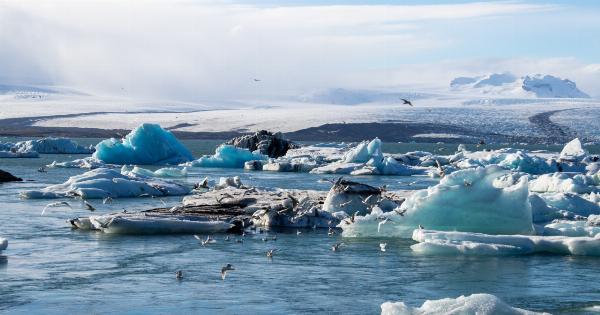Veal meat is often regarded as a delicacy, prized for its tenderness and unique flavor. However, the production of veal meat poses several ecological and environmental challenges.
This article explores the impact of veal meat on the planet, highlighting the various aspects that contribute to its environmental footprint.
1. Intensive Farming and Deforestation
One of the major concerns associated with veal meat production is the reliance on intensive farming practices. Calves are often raised in confined spaces, known as veal crates, which severely restrict their movement.
These cramped conditions not only lead to immense animal welfare concerns but also require significant amounts of resources, such as feed, water, and energy.
The high demand for veal meat contributes to deforestation as large areas of land are cleared to make way for animal feed production.
Forests are often cleared and converted into agricultural land, leading to habitat loss for numerous species and contributing to climate change through increased greenhouse gas emissions.
2. Water Consumption and Pollution
The production of veal meat requires substantial amounts of water, both for animal hydration and crop irrigation. Water scarcity is a growing global concern, and the inefficiency of water usage in veal meat production exacerbates the issue.
This water-intensive process contributes to resource depletion and can have severe consequences for local ecosystems and communities.
Moreover, veal meat production also contributes to water pollution. The excessive use of fertilizers, pesticides, and antibiotics in feed crops and confined animal feeding operations (CAFOs) leads to runoff contaminated with harmful substances.
This contaminated water can find its way into rivers, lakes, and other bodies of water, causing immense damage to aquatic ecosystems.
3. Greenhouse Gas Emissions
The rearing, transportation, and processing of veal meat have a significant carbon footprint. Livestock production, including veal calves, contributes to greenhouse gas emissions such as methane and nitrous oxide.
Additionally, the cultivation and transportation of animal feed contribute further to these emissions.
Methane, a potent greenhouse gas, is released during enteric fermentation in the guts of ruminant animals like cattle. Nitrous oxide is primarily emitted from stored manure and from the overuse of nitrogen-based fertilizers.
Both gases contribute to global warming and climate change, further exacerbating environmental challenges.
4. Biodiversity Loss and Species Extinction
The conversion of natural habitats into agricultural land for veal meat production exacerbates biodiversity loss and increases the risk of species extinction.
As forests are cleared, numerous species lose their natural habitats and struggle to survive in fragmented landscapes. This loss of biodiversity disrupts ecosystem functioning and can have cascading effects on other species and natural processes.
5. Antibiotic Resistance
The intensive farming practices associated with veal meat production often involve the prophylactic use of antibiotics to prevent disease outbreaks in confined and overcrowded conditions.
This overuse of antibiotics contributes to the global issue of antibiotic resistance, whereby bacteria become resistant to the drugs used to combat them. Antibiotic-resistant bacteria pose a significant threat to both human and animal health, making infections harder to treat and potentially leading to increased mortality rates.
6. Waste and Manure Management
The management of waste and manure in veal meat production is a significant environmental concern.
Large-scale confinement operations generate significant amounts of manure that release pollutants such as nitrogen, phosphorus, and pathogens into the environment. Inadequate waste management practices can lead to water contamination, soil degradation, and air pollution, further contributing to the environmental impact of veal meat production.
7. Sustainable Alternatives
Recognizing the environmental challenges associated with veal meat production, several sustainable alternatives are emerging.
One such approach is the adoption of regenerative agriculture practices, which promote soil health, biodiversity, and carbon sequestration. Additionally, plant-based alternatives to veal meat are becoming more readily available, providing consumers with environmentally friendly choices that do not contribute to the negative impacts outlined above.
8. Consumer Choices and Awareness
Consumers play a crucial role in driving change within the veal meat industry.
By making informed choices and supporting sustainable alternatives, individuals can reduce the demand for conventional veal meat and encourage the adoption of more environmentally friendly practices. Increased awareness and education about the ecological impact of veal meat production can empower consumers to make environmentally conscious decisions when it comes to their dietary choices.
9. Government Regulations and Initiatives
Government regulations and initiatives can significantly impact the veal meat industry’s environmental footprint.
Stricter regulations on intensive farming practices, deforestation, and waste management can help mitigate some of the negative impacts associated with veal meat production. Encouraging and supporting sustainable farming practices through incentives and grants can also promote the adoption of more environmentally friendly approaches.
10. Conclusion
It is evident that the production of veal meat has substantial environmental consequences. From deforestation and greenhouse gas emissions to water pollution and antibiotic resistance, the impact of veal meat on the planet is significant.
Addressing these challenges requires a collective effort from consumers, producers, and policymakers to prioritize sustainable alternatives and practices that protect the environment and promote the well-being of future generations.






























